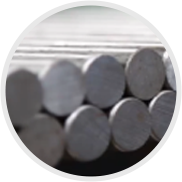 Afrikaans
Afrikaans  Albanian
Albanian  Amharic
Amharic  Arabic
Arabic  Armenian
Armenian  Azerbaijani
Azerbaijani  Basque
Basque  Belarusian
Belarusian  Bengali
Bengali  Bosnian
Bosnian  Bulgarian
Bulgarian  Catalan
Catalan  Cebuano
Cebuano  Corsican
Corsican  Croatian
Croatian  Czech
Czech  Danish
Danish  Dutch
Dutch  English
English  Esperanto
Esperanto  Estonian
Estonian  Finnish
Finnish  French
French  Frisian
Frisian  Galician
Galician  Georgian
Georgian  German
German  Greek
Greek  Gujarati
Gujarati  Haitian Creole
Haitian Creole  hausa
hausa  hawaiian
hawaiian  Hebrew
Hebrew  Hindi
Hindi  Miao
Miao  Hungarian
Hungarian  Icelandic
Icelandic  igbo
igbo  Indonesian
Indonesian  irish
irish  Italian
Italian  Japanese
Japanese  Javanese
Javanese  Kannada
Kannada  kazakh
kazakh  Khmer
Khmer  Rwandese
Rwandese  Korean
Korean  Kurdish
Kurdish  Kyrgyz
Kyrgyz  Lao
Lao  Latin
Latin  Latvian
Latvian  Lithuanian
Lithuanian  Luxembourgish
Luxembourgish  Macedonian
Macedonian  Malgashi
Malgashi  Malay
Malay  Malayalam
Malayalam  Maltese
Maltese  Maori
Maori  Marathi
Marathi  Mongolian
Mongolian  Myanmar
Myanmar  Nepali
Nepali  Norwegian
Norwegian  Norwegian
Norwegian  Occitan
Occitan  Pashto
Pashto  Persian
Persian  Polish
Polish  Portuguese
Portuguese  Punjabi
Punjabi  Romanian
Romanian  Russian
Russian  Samoan
Samoan  Scottish Gaelic
Scottish Gaelic  Serbian
Serbian  Sesotho
Sesotho  Shona
Shona  Sindhi
Sindhi  Sinhala
Sinhala  Slovak
Slovak  Slovenian
Slovenian  Somali
Somali  Spanish
Spanish  Sundanese
Sundanese  Swahili
Swahili  Swedish
Swedish  Tagalog
Tagalog  Tajik
Tajik  Tamil
Tamil  Tatar
Tatar  Telugu
Telugu  Thai
Thai  Turkish
Turkish  Turkmen
Turkmen  Ukrainian
Ukrainian  Urdu
Urdu  Uighur
Uighur  Uzbek
Uzbek  Vietnamese
Vietnamese  Welsh
Welsh  Bantu
Bantu  Yiddish
Yiddish  Yoruba
Yoruba  Zulu
Zulu Understanding Belt Drive Idler Pulley Mechanisms and Their Applications in Machinery
Understanding Belt Drive Idler Pulleys An Essential Component
Belt drive systems play a crucial role in various machines and mechanical devices, enabling power transmission through flexible belts. Among the essential components of these systems are idler pulleys, which serve numerous functions that contribute to the efficiency and performance of belt drives.
What is an Idler Pulley?
An idler pulley is a simple cylindrical device that is used to maintain or redirect the tension in a belt drive system. It does not drive any load directly but is critical for ensuring that the belt maintains proper tension and alignment, which is vital for the smooth operation of the system. Idler pulleys are commonly made from durable materials such as plastic or metal, designed to withstand varying forces and environmental conditions.
Functions of Idler Pulleys
1. Tension Maintenance One of the primary functions of an idler pulley is to keep the belt taut. A belt that is too loose can slip off the pulley or wear out prematurely, reducing the efficiency of the drive system. By providing tension to the belt, the idler pulley helps ensure consistent power transfer.
2. Belt Alignment Proper alignment of the belt is essential for preventing excessive wear and tear. Idler pulleys can help guide the belt along its intended path, reducing the likelihood of misalignment that may lead to increased friction, noise, or failure of the components.
3. Reducing Belt Vibration When belts operate under high speed or load, they can generate vibration. The inclusion of idler pulleys in the system can dampen this vibration, promoting a smoother operation and prolonging the lifespan of the entire assembly.
4. Changing Direction In certain applications, belts need to navigate around corners or curves. Idler pulleys can assist in redirecting the belt’s path, allowing for more complex machinery designs without compromising performance.
belt drive idler pulley

Applications of Idler Pulleys
Idler pulleys are ubiquitous in various applications across different industries. They are commonly found in automotive engines, where they are used to manage the serpentine belt that drives multiple accessories, such as the alternator, power steering pump, and air conditioning compressor. Additionally, they are prevalent in industrial equipment like conveyors, where they help maintain belt tension and ensure steady material movement.
In consumer products, idler pulleys can be seen in devices such as lawn mowers, washing machines, and fitness equipment, where they aid in the efficient functioning of the motor and related components.
Maintenance and Considerations
While idler pulleys are generally low maintenance, regular inspections are crucial to ensure they remain in good working condition. Signs of wear, such as cracks, excessive noise, or visible misalignment, necessitate prompt replacement to avoid further damage to the belt or connected machinery.
When selecting an idler pulley for a specific application, it is important to consider factors such as size, material, and load capacity. These factors will significantly impact the performance and longevity of the belt drive system.
Conclusion
In summary, idler pulleys are indispensable components in belt drive systems, contributing to tension maintenance, alignment, reduced vibration, and the ability to change direction. By understanding their functions and significance, engineers and technicians can design more effective machinery and ensure operational reliability in various applications. With proper maintenance and attention, idler pulleys can significantly enhance the performance of belt drive systems, which are fundamental to the functioning of countless machines in our everyday lives.
-
Revolutionizing Conveyor Reliability with Advanced Rubber Lagging PulleysNewsJul.22,2025
-
Powering Precision and Durability with Expert Manufacturers of Conveyor ComponentsNewsJul.22,2025
-
Optimizing Conveyor Systems with Advanced Conveyor AccessoriesNewsJul.22,2025
-
Maximize Conveyor Efficiency with Quality Conveyor Idler PulleysNewsJul.22,2025
-
Future-Proof Your Conveyor System with High-Performance Polyurethane RollerNewsJul.22,2025
-
Driving Efficiency Forward with Quality Idlers and RollersNewsJul.22,2025





























